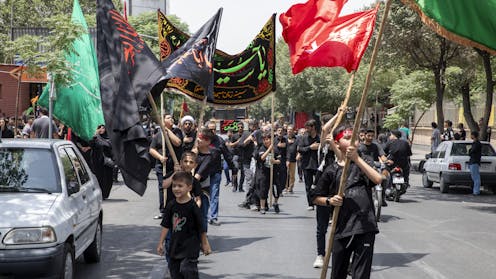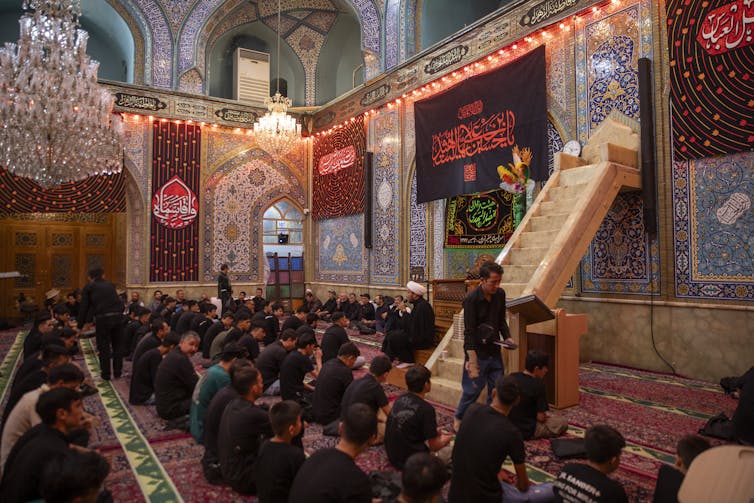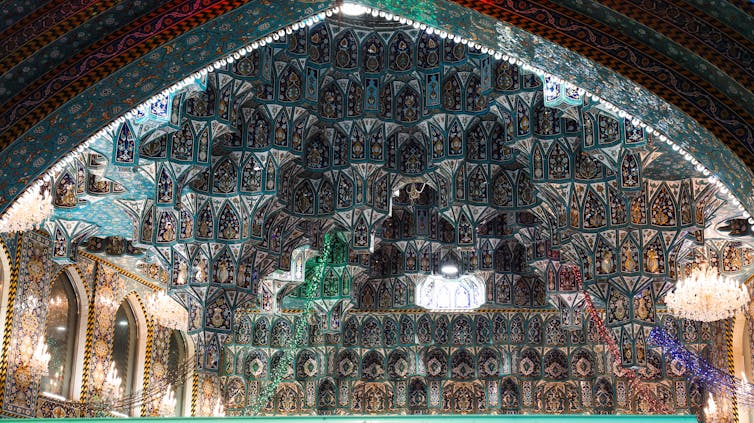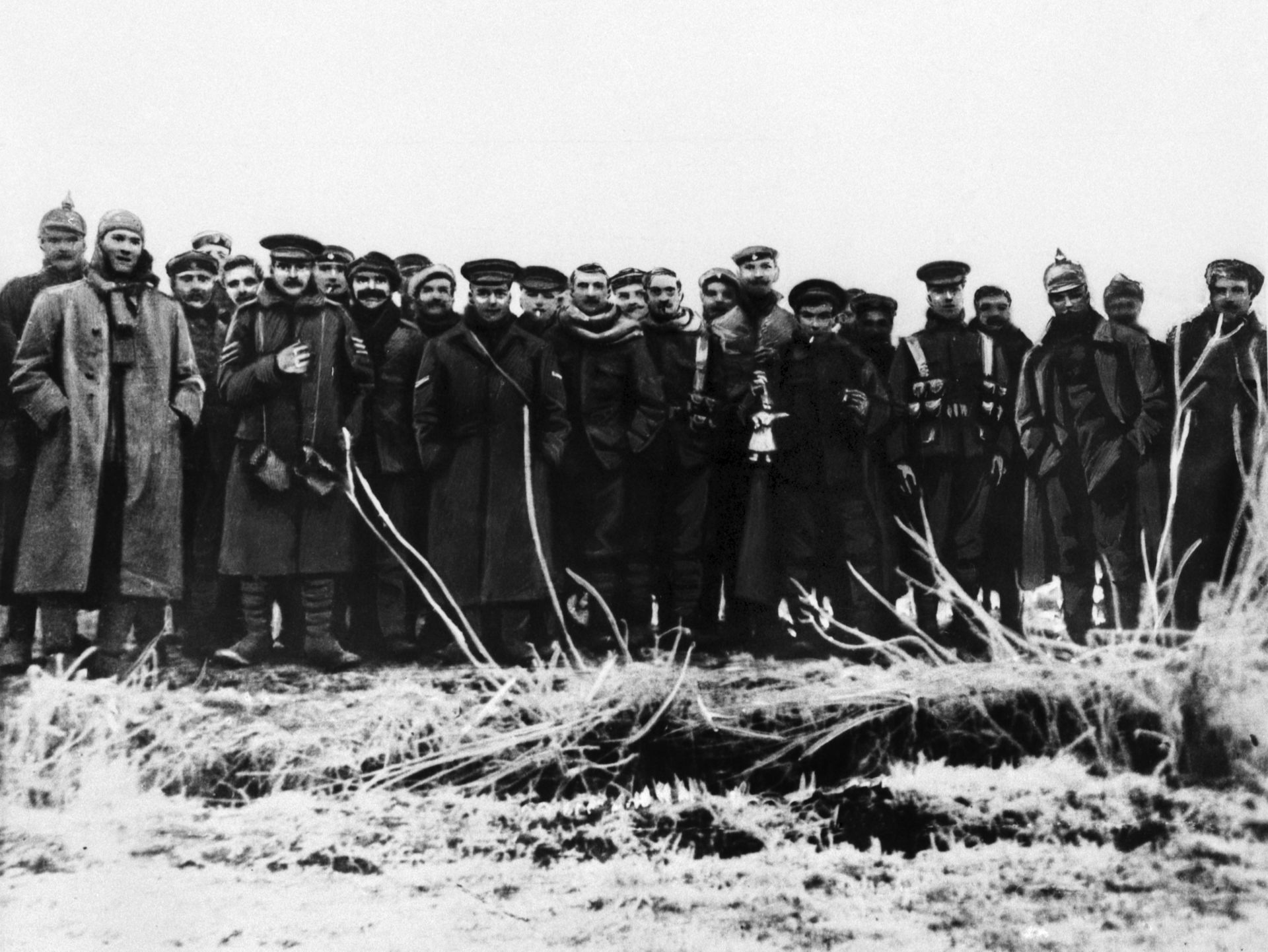Twelver Shiism – a branch of Islam that serves both as a spiritual and political force in Iran and b
Twelver Shiites believe in a continuous line of 12 imams, all regarded as descendants of the Prophet Muhammad.

Twelver Shiism is the largest branch within Shiism – one of the two major sects within Islam. Shiism is the second-largest tradition within Islam overall, following the Sunni tradition.
Iran is the only country to have Twelver Shiism as its official religion. In this tradition, religious leaders known as the marājiʿ al-taqlīd – the highest-ranking cleric within Twelver Shiism – and other high-ranking clerics, including ayatollahs, are regarded as moral and spiritual authorities whose guidance extends to both religious and political matters.
The second-largest population of Twelvers after Iran is in Iraq. Other major communities live in Pakistan, India, Lebanon, Azerbaijan and other countries of the Persian Gulf, such as Bahrain and Kuwait. There are also Twelver communities in some Western countries.
I am a practicing Twelver and have worked for an anthropological research project that highlights the rich cultural traditions of ethnic groups across Iran, based on written historical documents that cover various topics. This experience deepened my appreciation for Iran’s diversity, including the many ways in which Twelver Shiism is practiced and understood. Twelver Shiism is deeply rooted in a spiritual, theological and ethical tradition with over a millennium of history.
In Twelver Shiism, these values touch many aspects of daily and communal life. They are present in traditions and rituals, such as during Muḥarram, the first month of the Islamic calendar. They are also reflected in art, architecture and philanthropy as moral and religious obligations.
History and core beliefs
According to the Shiite tradition, the Prophet Muhammad’s family holds a special, divinely guided role in both religious and political leadership of the Muslim community.
Twelver Shiites, however, believe in a continuous line of 12 imams, considered to be descendants of the prophet through his daughter Fatima and son-in-law Ali. These imams represent moral integrity and spiritual authority and have a deep knowledge of the Quran and Islamic law.
The origin of Shiite identity traces back to the period following Muhammad’s death in A.D. 632. One group of Muslims supported Abu Bakr, a close companion of the prophet, as the first caliph – the successor to Muhammad and the leader of the Muslim community. This group later came to be known as Sunnis. Others believed that Ali, the prophet’s cousin and son-in-law, had been designated to lead. This group became known as Shi‘at Ali – the Party of Ali – which eventually evolved into the Shiite branch of Islam.
In the following years, Imam Hussein ibn Ali – the grandson of Muhammad – refused to recognize the authority of the Umayyad caliph Yazid, the ruler of the Umayyad dynasty from 680 to 683. Yazid’s rule marked the beginning of dynastic succession in the caliphate, a change many Shiites criticized as a departure from earlier Islamic principles of leadership. Hussein objected to Yazid’s claim on both political and moral grounds. He questioned Yazid’s legitimacy and refused to pledge allegiance to a ruler he believed was unjust.
Accompanied by a small group of companions and family members, Hussein embarked on a journey toward Kufa, Iraq, where he was intercepted and ultimately killed at the Battle of Karbala in 680. In Twelver Shiism, this death is revered as martyrdom, and the event holds enormous historical and religious significance, as it stands as a symbol of resistance to injustice when faced with tyranny. The remembrance of Karbala stands at the heart of the Shiite worldview. Within the Twelver tradition, it affirms the right to resist injustice.
In the following centuries, further differences over succession led to divisions within Shiites. Twelver Shiites recognize 12 imams, while other groups, such as the Ismailis and Zaydis, follow different descendants of Ali and have formed their own interpretations of religious authority.
Mourning and reflection
The battle of Karbala is mourned as a tragedy but remembered as a moral triumph among Shiite Muslims.
During the month of Muḥarram, the first 10 nights are set aside for reflection on the martyrdom of Hussein. This period culminates on the 10th day known as Āshūrā.

During these nights, Shiite families and communities create spaces of grief and remembrance. In many neighborhoods, shrines and mosques – grand or modest – are adorned with black flags, handwritten prayers, chains and candles.
Taziyyah – elegies and processions – enact the story of the martyrdom of Hussein as a symbol of resistance and sacrifice.
During those 10 days, people often turn living rooms, basements or alleyways into mourning spaces. They hang black, red and green cloth on the walls, and they light candles. Families and neighbors gather to recite poetic elegies and serve tea and food. These moments bring mourning into the rhythm of daily life.
Culture and art
Love for the prophet’s family, and a continuing search for justice and spiritual meaning, has inspired poetry, architecture, ritual and daily practice among Twelver Shiites across generations.
In Twelver contexts, especially in Iran and Iraq, grief is expressed through shrine design. Holy shrines are decorated with mirror mosaics, glowing tiles and engraved prayers. This architecture has symbolic and spiritual significance that deepens the sense of awe and respect in visitors, conveying a sense of hope for divine light and inviting reflection on martyrdom as the most honored form of death, or ashraf al-mawt.

There are other examples of how the spiritual memory of Karbala has inspired Twelver Shiites across generations: Artists in the the Saqqakhana movement, an Iranian art movement that emerged in the 1950s and ‘60s, drew inspiration from devotional structures and other popular rituals of Shiite piety. The word saqqakhanan – house of the water-giver – refers to small shrinelike fountains installed on neighborhood corners, where water is offered in remembrance of Hussein’s thirst at Karbala.
These structures, often decorated with chains, candles, mirrors and handwritten prayers, serve as modest devotional spaces where passersby pause for reflection or prayer. The artists used materials such as calligraphy, amulets, talismans, prayer beads and cloth, and combined them with techniques from modern painting and sculpture. Their goal was not to depict faith directly but to translate its emotional and symbolic language of devotion into visual expression. This movement carried into modern art galleries.
Philanthropic practices
This living tradition also shapes how Twelver Shiism understands generosity and philanthropy as a moral and religious obligation.
Philanthropy in Twelver Shiism evolved under the guidance of contemporary “marāji,” the highest-ranking religious scholars, who interpret the obligations of giving in light of present-day realities.
Like all Muslims, Twelvers are required to give zakat, a key Islamic philanthropic tradition and an obligatory act of giving. In addition, Shiite tradition uniquely includes Khums, a 20% religious obligation on annual savings and surplus income, which Twelvers pay directly to recognized Shiite religious authorities or their appointed representatives. Half is allocated to the needy descendants of the prophet, while the other half is entrusted to religious authorities to support religious, educational and charitable initiatives.
Shiite communities also sustain charitable giving through the institution of waqf, or charitable endowment, which supports mosques, religious schools and aid for the poor.
According to Islamic scholar Seyyed Hossein Nasr, the diversity within Islam, including the Shiite tradition, reflects the richness of Islam. Twelver Shiism, in this view, stands as a profound spiritual path within the broader Islamic tradition.
Massumeh H. Toosi does not work for, consult, own shares in or receive funding from any company or organization that would benefit from this article, and has disclosed no relevant affiliations beyond their academic appointment.
Read These Next
The ‘sacred’ pledge that will power the relaunch of far-right militia Oath Keepers
Founder Stewart Rhodes says he will relaunch the group, serving as an important outlet for thousands…
Who thinks Republicans will suffer in the 2026 midterms? Republican members of Congress
The president’s party almost always loses seats in the midterms. More than two dozen Republican House…
The celibate, dancing Shakers were once seen as a threat to society – 250 years later, they’re part
‘The Testament of Ann Lee,’ Mona Fastvold’s 2025 film, depicts part of the long history of Shaker…






